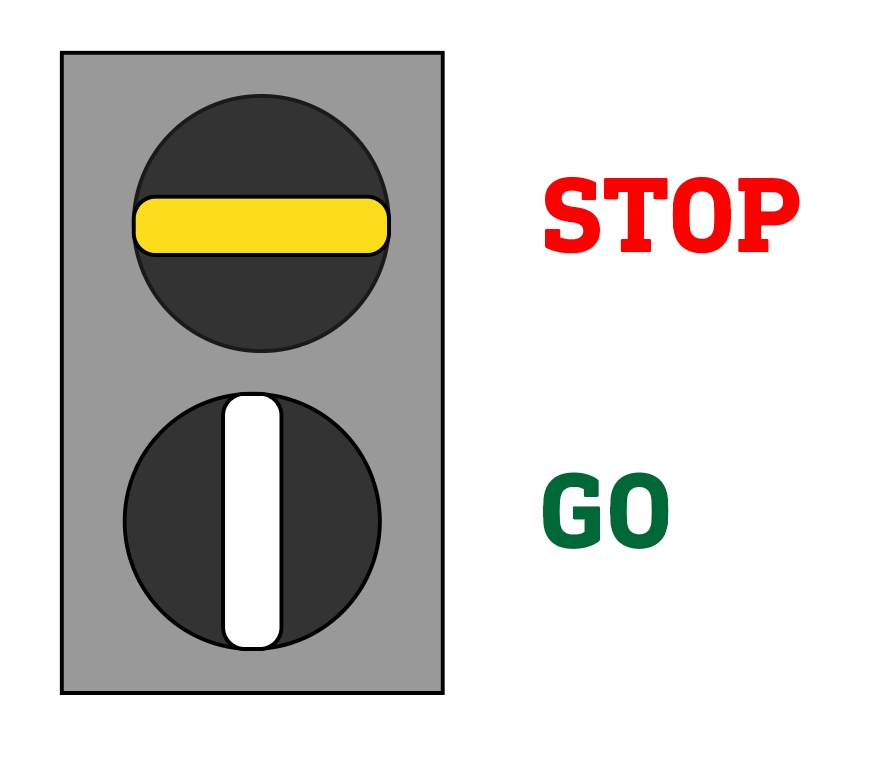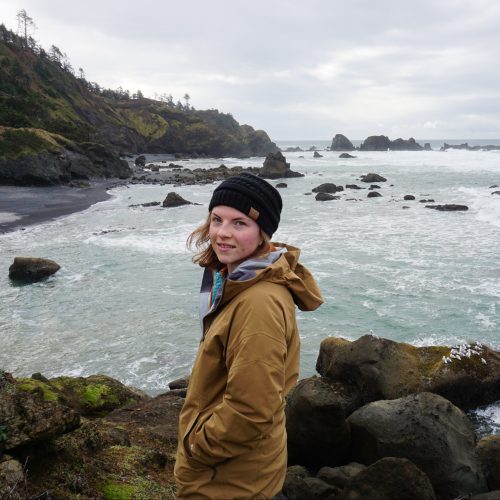How MAX Moves Downtown
Have you ever stopped to marvel at the complicated dance that is Downtown Portland?
In a relatively small amount of space, we have light rail, streetcars, buses, cars, bikes, scooters, pedestrians and more. And yet, everything moves remarkably smoothly (albeit never as quickly as everybody would like). How does that happen?
We bugged the people in our planning and engineering departments to give us all the details about how our 200-foot-long MAX trains move through Downtown. They described all the different parts, how everything works together and what can throw it all off.
What the System Does
Green means go, red means stop. Our traffic signals are ingrained in us from the time we’re young enough to notice them.
But did you know that MAX has its own traffic signal system in Downtown Portland? And “go” is not green; it’s a vertical, white bar.
But we’re getting ahead of ourselves. Let’s back up — there are two main systems that control the movement of MAX trains…
The traffic control systems
The city has a complex software system that monitors and controls the flow of traffic — mostly through traffic lights — around the city. Think like what you see in movies (but without human intervention). Most of the work is done by computers running complicated programs and algorithms.
Bonus fact: Outside of Downtown, MAX trains are governed by yet another strategy that prevents collisions. The tracks are divided up into sections, and the system prevents two trains from traveling on the same section at the same time. That way, there’s no chance of them running into each other. This stuff is pretty standard across all rail systems.
The automatic braking system
If a signal tells a MAX train to wait and an operator proceeds anyway, the automatic braking cuts off power to the train. This prevents collisions.
Downtown is a little different.
In Downtown Portland, MAX abides by the city’s traffic control system. But…
There is no automatic braking. The traffic control lets trains share sections of tracks.
Why, you ask?
Well for starters, because the tracks are on the streets instead of in a separated path, which means slower speeds all around and less of a need for that automatic braking. Also, there’s a lot of stuff that has to get through Downtown, and if the system didn’t allow the trains to share tracks, things would move slower than they already do.
That means we put a lot of trust in our operators. They have to pay close attention to the signals, other trains and cars, as well as pedestrians and bikers (which is why MAX operators go through a lot of training and testing). It’s also another reason they don’t go very fast Downtown…
No faster than 12.5 mph, actually.
When you’re Downtown, that’s the magic speed. Each intersection is on a 56-second cycle, and the timing works sequentially so that no matter what the mode of travel, if you move at 12.5 mph you’ll hit green light after green light. That’s why once a train gets the go-ahead, it usually makes it through all the lights until its next stop.
In some situations, we can avoid minor delays by slightly extending lights for a train in danger of missing their signal (our traffic control is smart like that).
What happens at a stop?
 When a train pulls into a station, it says a silent “Hello!” to an underground loop of metal that tells the traffic control system which train is there. This transponder is pretty similar to the magnetic plates that detect your car at intersections and turn the light green for you.
When a train pulls into a station, it says a silent “Hello!” to an underground loop of metal that tells the traffic control system which train is there. This transponder is pretty similar to the magnetic plates that detect your car at intersections and turn the light green for you.
Then the doors open, a few seconds go by, and you hear a familiar voice saying, “the doors are closing, train departing, please hang on.”
 Now, the operator presses a button.
Now, the operator presses a button.
That button tells the traffic control system, “Hey, I’m ready to go!”
This part essentially works the same as when a pedestrian is at a crosswalk. Unless they press the button, they won’t get the signal to proceed. And once they press the button, they don’t get to go immediately. They get put in line and have to wait their turn. MAX works the same way — the operator presses the button and waits for the signal to switch to the vertical “go” light.
What if something gets in the way?
Maybe there’s a car blocking the tracks, or the doors are being held open. These things happen, but if a train misses its window to get through an intersection, it has to wait almost a minute until the next one.
That may seem like a small inconvenience, but since the whole system is so interconnected and on such a tightly choreographed schedule, even tiny errors can mess up the schedule of multiple trains for several hours. If this happens, we’ll always let you know.
Is that why the MAX won’t wait for people?
Yep. Once those doors are closing, they can’t open again — even if the operator sees you running. It’s inconvenient for individuals, but it’s the only way to keep our trains on time for everyone.
Tidying MAX tracks with The Beast
TriMet’s Maintenance of Way (MOW) department manages the MAX light rail system’s overhead electric wires, signals, substations (which convert electricity from the public supply to power trains) and tracks. Since September 2022, MOW crews have saved a lot of time...
The Story of a Pageant Queen and Rail Training Supervisor 👑🚊
One of the biggest joys of the job for Rail Training Supervisor Krista Stone is pulling into a platform and seeing excited children waving at her. Girls tend to light up when they see a woman at the controls; Krista remembers one, with boundless enthusiasm, point and...
Hampton Rodriguez: The magical world of transit ticket art
For many riders, transit serves a simple purpose: trips for groceries, school, work and other destinations. But for Portland-based artist Hampton Rodriguez, transit is a conduit to inspiration for creating art. The self-described urban artist is originally from the...
Terms of Use • Privacy Policy • Rider Help Center • © TriMet





